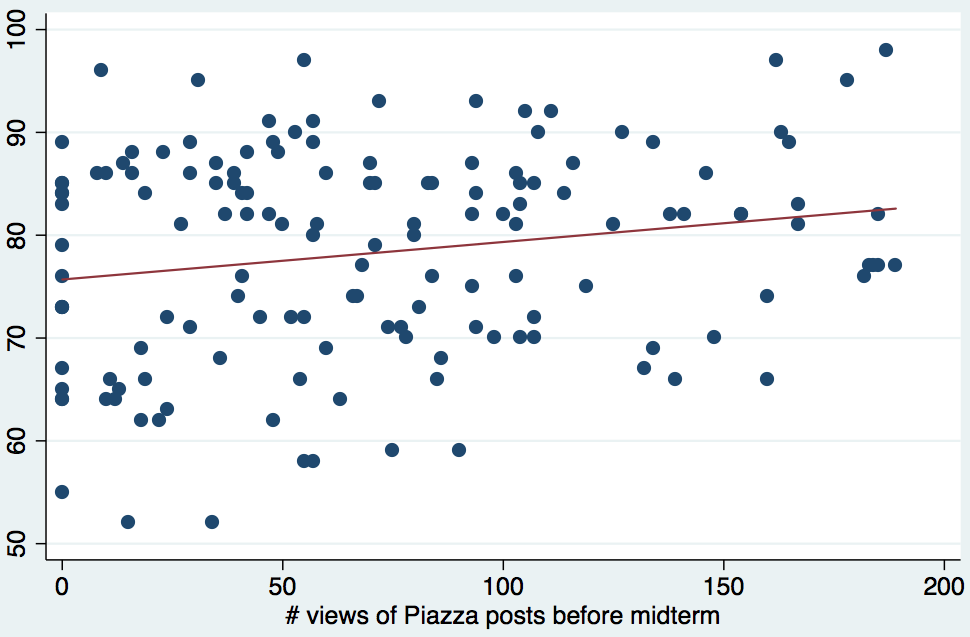Piazza Discussion Boards Get an A
I tried a lot of new things in my class this semester, and now that it’s over, it’s time to take stock of what worked and what didn’t. This fall my students posted 492 questions to our Piazza online discussion board. I answered 385 of them and contributed another 173 follow-up responses. It was a fair amount of work, but it meant everyone could read my answers and almost no one felt the need to come to my office hours. I missed the personal connections you make during office hours, but this system was a far more efficient use of everyone’s time.
After our last lecture, I asked students to give me anonymous feedback about specific elements of the class. One question I asked was:

56 of my 140 students responded. 62% said Piazza was very helpful, 36% said it was a little helpful and exactly one student said it was not helpful. There aren’t that many things besides postponing due dates and free cookies that students get this excited about.
It also turns out that participation in Piazza is highly correlated with exam performance. 40% of students asked at least one question before the midterm exam, and they scored on average 3 points higher on that exam relative to students who posted no questions (p=0.09). 16% of students answered at least one question and scored 1.4 points higher on the midterm, but this wasn’t statistically significant (p=0.54).
Total number of questions (and answers) viewed turns out to be the most predictive of midterm scores. The median number of views before the midterm was 60, and students who read at least this many scored 2.2 points higher on the exam (p=0.19). Students who viewed at least 100 (30% of the class) scored a highly significant 4.2 points higher than everyone else (p=0.02). Note that not a single student who viewed at least 100 posts scored below 65:

I know as well as anyone that correlation does not equal causation, and it’s possible the students participating most in the discussion forums would have done better on the midterm anyway, but these results are certainly encouraging.
While any discussion board software probably would have improved the class, there are features of Piazza that make it particularly well-suited to a classroom environment. At Yale, the obvious alternative is the Sakai discussion forum tool that is integrated into the university-standard course management system (“Classes*v2”). I see several advantages of Piazza:
- Students can post anonymously.
- Students can answer each other’s questions and instructors can mark answers as good or provide their own answers.
- Instructors can mark questions as duplicates of other questions.
- Instructors can go straight to a list of all the unanswered questions or unresolved follow-up questions.
- It’s easy to put mathematical equations into posts using either a graphical interface or raw Latex code.
Piazza won’t make every class better, but I think it’s a great match for almost any lecture-style class. All you need to do to get started is create your class on the Piazza web site and send the link to your students.